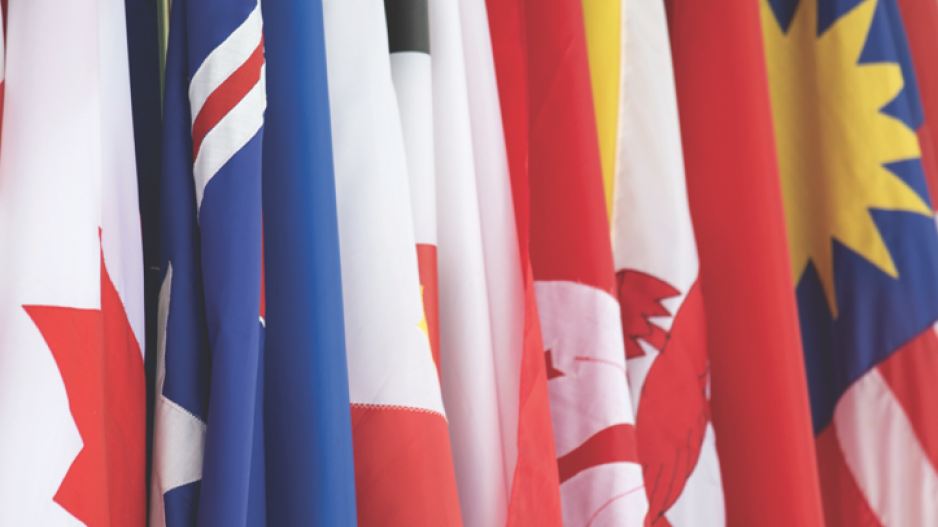Despite two high-profile stumbles on the Asian trade front at the end of 2017, the new year will likely see Canada keep pursuing both a free-trade deal with China and a seat at the now 11-strong Trans-Pacific Partnership (TPP-11) headlined by Japan.
That’s the consensus of several observers of Canada’s Asia-Pacific engagement. How Ottawa approaches these two large-scale discussions – as well as the possibility of a free-trade agreement (FTA) with the Association of Southeast Asian Nations (ASEAN) – will be among the key things to watch in the sector in 2018.
“The first focal point, when you talk about Asia-Pacific in 2018, is obviously going to be what’s happening on trade,” said Eva Busza, vice-president of research and programs at the Asia Pacific Foundation of Canada. “Whether it’s the TPP, a Canada-China FTA, a deal with ASEAN or even NAFTA, we have to keep an eye on where all of this is going.”
The foundation publishes an annual outlook every December on what to watch for in the next year, and Busza noted that last year’s outlook – titled RIP TPP? and focused on a potential U.S. pullout from the agreement – was right on the mark, as President Donald Trump announced the United States’ departure from the TPP as one of his first directives in January.
This year’s version outlined a number of issues, but trade agreement negotiations, considering Canada’s uncertain role in light of North American Free Trade Agreement renegotiations with the United States, figure to be a crucial topic not only for Canadian relations with Asia, but also for the country’s domestic economic growth and job creation.
Prime Minister Justin Trudeau made headlines in November and December after backing away from signing a final TPP-11 agreement at the Asia-Pacific Economic Cooperation summit in Vietnam, followed by a top-level trip to Beijing that failed to yield the launch of formal bilateral FTA talks with China. In both cases, it is believed that Ottawa’s wish to include protections for the environment and the rights of workers and women disrupted both discussions.
While Canadian officials have made clear that the federal government will not be rushed into signing deals at all costs, observers like Busza are concerned that such ideological stances may further slow an already complex negotiation process on both the TPP and Chinese fronts.
“I remember looking at a list of trading agreements and the amount of time it took for them to be negotiated, and the average was seven to 10 years,” Busza said. “In the Canada-China FTA, Canada wants a completely new type of agreement with all sorts of measures that’s nothing like anything China’s ever been used to – and, in fact, most of the world has not seen in free-trade agreements … and even traditional FTAs can take up to 10 years, so to expect a quick result is probably unrealistic.”
Sarah Kutulakos, executive director of the Canada China Business Council, noted that while Trudeau did not leave Beijing with an official FTA announcement, the key is that Ottawa established a number of high-level communications links with China. Such “institutionalized structures for dialogue” are almost as important as a deal itself, Kutulakos said.
“All of us in business who have done deals in China know that you almost never get anything in the first hit,” Kutulakos said. “China is going to negotiate for what it wants, and we are going to negotiate for what we want. It isn’t always easy to match those two goals, so I’m disappointed that the launch didn’t happen as soon as it could have, but I can only hope our government is out there pushing for the things that the Canadian business community has asked for.”
Among the trends Kutulakos has identified as key in 2018 is the advent of Chinese e-commerce giants like Alibaba (NYSE:BABA) and JD.com, both of which have made outreaches this year to Canada (Alibaba to Toronto, JD.com to Vancouver). Such platforms, if established, will help Canadian businesses gain access to the world’s largest e-commerce market without setting foot in China, eliminating a significant barrier to trade.
“E-commerce platforms are making things a lot easier,” Kutulakos said. “Now, it’s not a done deal. When Alibaba did their event in Toronto in September, they explained it very well – it’s not just throwing your product over the wall and you’ll be taken care of. It’s a suite of services where somebody will handle your logistics. So that process is getting easier.”
Other points identified by Kutulakos include 2018 being named the “China-Canada Year of Tourism,” with a number of promotions that are expected to boost the number of Chinese travellers visiting Vancouver and beyond in the new year.
Meanwhile, Busza said, it’s important to remember that Canada also began exploratory free-trade talks with ASEAN in 2017, adding that the Southeast Asian market can be very lucrative for Canadian companies as well – if Ottawa and ASEAN officials can see eye to eye on the same progressive issues that Canada has championed in talks with China and TPP.
“I’m assuming, but if they do launch formal FTA talks with ASEAN, the likelihood is that Canada would want to go for a comprehensive, progressive trade agreement,” Busza said. “The chapters on the environment, labour and women’s rights do touch on political agendas. So it seems inevitable that these issues will come up.… The question is whether [ASEAN] countries will feel they are at a place where they can commit to effectively negotiating on those issues.”
The Asia Pacific Foundation of Canada’s outlook for 2018 included a chapter on the year being “pivotal” for democracy in Southeast Asia, with elections scheduled in Cambodia, Malaysia and Thailand at a time when those countries are facing crackdowns on civil dissent and an erosion of democratic institutions such as a free press.•




